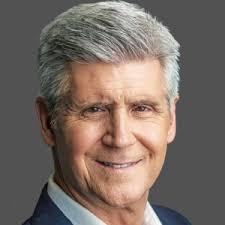Does Your Company Need a Chief Innovation Officer
Leadership is not about being in charge. Leadership is about looking after those in our charge. Simon Sinek
Does a ship need a captain? Does a sports team need a coach? Does an army need a general? One could argue that a ship can function without a captain because the crew does all the “hard work” of making the ship sail. Kids have been playing football (or soccer), baseball, basketball, and some they just make up without coaches since the beginning of human existence. Armies can fight even without a general. So, why do we need a Chief Innovation Officer when in theory everyone in the organization can just innovate as it has always been?
Looking at the questions that come from the previous paragraph, let’s discuss innovation in that context.
Does a ship need a captain? From the tiniest dingy to the largest oil tanker or passenger vessel, sailing is a complicated proposition. In fact, a captain of a large ship is a licensed mariner who has overall command and control over navigation, maneuvering, cargo handling, stowage, communications, and safe handling of the ship. On a large passenger ship this also extends to responsibility roughly equivalent to becoming the president, governor, or mayor of the ship’s population in international water. Essentially, all responsibility rests on their shoulders. In a large company, this may be the CEO, but in a very large company this rests with a VP or other chief executive. So, one could say that a Chief Innovation Officer is more like a first mate who takes command of the ship if the captain is incapacitated. The first mate is generally in charge of the cargo and/or passengers, while there are second and third mates in charge of other functions. So, even if the Chief Innovation Officer is equated to a first mate, they maintain responsibility for a very important function of the company.
Does a sports team need a coach? In the professional ranks, a team generally has a manager and a coach. In this case, we can get straight to the Chief Innovation Officer being equivalent to the coach. Since the managers role is to spearhead public relations between athletes, coaches, other personnel, and the media, they have more of an administrative function. Apropos to the Chief Innovation Officer, the coach plans, organizes, and conducts practice sessions. They are responsible for analyzing the strengths and weaknesses of individual athletes and opposing players/teams. They plan strategies and choose who will play in each competition. We will circle back to this in a few minutes.
Does an army need a general? This one is especially challenging and a good argument for a Chief Innovation Officer. A one star general typically command about 4,000 personnel (a brigade), while a two star commands a division (3-5 brigades). Three and four stars are regional, commanding multiple divisions. In this case, it is all about size, but when you look at a more granular description a general works at the strategic, operational, and political level of war. As a Chief Innovation Officer, this is a nice example of what they should also be doing on a day-to-day basis. Innovation requires the Chief Innovation Officer to develop the innovation strategy, how it will get done and in charge of monitoring the day-to-day innovation activities.
Since the Chief innovation Officer is a new position that many executives do not understand, a primer on an innovation system is helpful. In short, innovation is like pouring ideas into a funnel. Granted, the funnel analogy is a little confusing since everything that goes into a funnel must eventually fall out, but it’s the most used analogy for the discipline. Perhaps a better way to think of innovation is to imagine a pegboard test that most children play when they are very young. Think of the board as the strategy. The Chief Innovation Officer must develop a strategy (in conjunction with peer executives) to decide how many circles, ovals, triangles, squares, rectangles, rhombus, parallelograms, trapezoids, pentagons, etc. the company needs to compete effectively. This would not typically be information available to anyone below the executive suite, mostly because one wouldn’t want a competitor to find out.
Another way in which the Chief Innovation Officer becomes critical to the process is by management of the portfolio of ideas. Once the holes are created (the strategy), it is incumbent on the Chief Innovation Officer to be sure that just the right number of pegs (of the correct shape) are manufactured. In the case of innovation, the CIO makes sure that everyone isn’t working on square pegs when the strategy calls for mostly round ones. This critical job assures the company that the innovators or employees are not all working without purpose. Even at a company like Google, where creative time is granted, jet engines may not be a part of the strategy. Should there be too many people working on square pegs, the CIO must find a way to compare pegs and stop them from being made if there are too many in process. Even more important, if round pegs are being made for round holes, they must be the right size. Bottom line is that allowing everyone to innovate without direction might result in no round pegs or even a bunch of round pegs; none that are the right size.
Next, the Chief Innovation Officer works to operationalize the innovation process. This function might include clearing blockers to innovation, securing a budget, and securing cross functional teams that have the best chance of success. During the pandemic many companies rethought their Chief Innovation Officer position because many of them didn’t understand their position or did not receive proper training or coaching. For innovation consultants and GIMI-IAOIP, this was particularly difficult to witness. Chief Innovation Officers that allowed themselves to be seduced by the single billion-dollar idea, while ignoring smaller wins was problem we saw the most during this time. Add to this that innovation is almost always better when teams are in proximity to one another (this is NOT always the case), and you had a formula for Chief Innovation Officer failure and the resultant disillusionment of many CEOs to the position.
How do I rebuild the CIO position?
At GIMI-IAOIP we distinguish between innovation practitioners and innovation managers. Think about this in relation to the earlier discussion of coaches. While many players become coaches, the majority were never players. Being a player means you might have outstanding eye-hand coordination. Speed. Agility. Field sense. Being a manager means you can plan, draw up plays, spot talent, manage athletes and handle the press. Being a good player requires a different skill set than a manager, and being a manager requires a different skill set than a player. There are always exceptions and many times the Chief Innovation Officer can be promoted from a role as an innovation practitioner. People such as Bill Russell, Pep Guardiola, Kenny Dalglish, Joe Torre, Mike Ditka, Jacques Lemaire, Lenny Wilkens, Toe Blake Franz Beckenbauer and Phil Jackson are the exception rather than the rule as players that become great coaches.
So, to conclude, there are practitioners and managers in innovation. Just as the sports teams have people who can play and coach, there will always be innovators who can manage the innovation process. The problem is something that I like to point out about polymaths; sometimes they are not appreciated. Just like a great athlete, an innovation practitioner’s personality is about excitement and the need to create something new. Talents that are not necessarily welcome in the C-suite. In contrast, the Chief Innovation Officer oversees making sure the process works and the innovators are happy and productive. Most importantly though, the Chief Innovation Officer, as Simon Sinek says, is “looking after those in our charge”.
February 27, 2024

Editor-in-Chief
International Journal of Innovation Science


